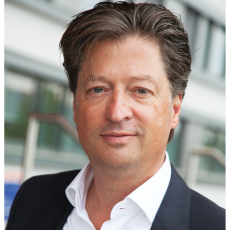In what context was Grodan founded and what is the main role that it plays in the agriculture industry?
Over 50 years ago, the Netherlands' government prohibited the farmers to disinfect the soil with methyl bromide due to its extremely negative side effects. While thinking of alternatives, in 60’s, inspired by nature, Grodan came up with the idea to use stone wool as a growing medium. This soilless method allows farmers to position the plants in a more ergonomic way, while also leading to increased quality and yields of up to 40%, thanks to the precision with which water and nutrients can be distributed to the roots. Our slabs are inert , when paired with our measuring device, it helps control and optimise the input used for the plants. Because we aim to be as sustainable as possible, we are offering a recycling program through which we yearly retrieve the stone wool from our customers to give used stone wool another purpose such as in bricks.
Pesticide free and carbon neutral agriculture will become the standard of the future, and growing in Controlled Environment Agriculture is surely going to compete with, but not replace, a part of the classic open field option, as we are starting to see more and more severe weather events and the efficient use of water and nutrients. Presently, 82% of the wild biomass has been lost, with humans and farm animals making up for 96% of the total biomass on the planet; this is not an encouraging ratio. Our present food system is not sustainable.
What are the main advantages of growing inside high-tech greenhouses and which challenges could potentially counterbalance them?
In high tech greenhouses, the crops can produce for 365 days per year with an up to 40% higher yield, so we are able to get more produce on up to 75% less land. Thinking out of the box, we could possibly extend this system beyond just tomatoes, cucumbers and sweet peppers towards other fruit and vegetables, and, definitely, across more countries around the globe. Organic farming is 30% less productive than intensive agriculture, while growing in controlled environments, like greenhouses, takes 20% less fertilizer and in case of for example tomatoes only four liters, in the most advaced greenhouses, of water instead of the 60 liters per kilogram in open fields.
Both the pandemic and the war in Ukraine showed us the importance of a localized fresh food supply chains, and greenhouses play a major role in this transition. In fact, it was only in 2016, after severe sanctions in response to the 2014 aggression, that Russia started investing in local greenhouses to secure their local food chain. We are now seeing something similar in the Middle East, where enclosed agriculture is starting to spread at an unprecedented pace. Energy is the main challenge in high-tech greenhouses, which are the most efficient ways of growing, according to research done by Grodan in collaboration with Wageningen University. In order to circumvent this issue, the industry is looking all kinds of alternative energy as well as innovative solutions as for example geothermal energy.
Besides horizontal farming, there is also the option of vertical farming. Where do you see more potential in the future?
At this point in time, vertical farming is not very profitable due to the significant initial investment and the energy intensive system that it employs to provide light, and dehumidification to the plants. With a much higher CapEx and OpEx than greenhouses, vertical farms are not yet sustainable enough and costprice competative enough to be a viable option. Moreover, since this concept has not reached maturity to serve the market at a large extent, important banks are wary to invest in this space. Nevertheless, our products can be incorporated in vertical farms. While large crops like tomatoes or cucumbers are not a good fit for vertical farms, strawberries, lettuce, herbs and other leafy greens make for great candidates that can obtain impressive yields in such setups.
How are you incorporating AI and machine learning in your products, at the moment, and are there any expansion plans in this respect?
In 2019, we launched a data driven decision platform, e-GRO, which is connected to our measuring device and the climate computer of the grower and provides us with important insights, that we turn into user friendly charts. Based on these data sets, we can further work with AI to see if we can find algorithms and models to improve the existing operations, for example a yield forecaster and predictive water management. Hopefully, with technology evolving and more companies showing interest in such programs, we will get to the point where an entire greenhouse is run by a computer. In addition to these, AI and ML are perfect tools to fill the workforce gap that we are facing, and to scale up the farming knowledge that is vital for future developments.
What do you see as the biggest obstacle in achieving that extra 50% increase in food supply that we need by 2050?
To increase food production, we need more CEA systems deployed in developing countries, but also an overall wealthier global population that can afford to buy fruits and vegetables grown inside greenhouses. Besides heavy investment in this space, we also have to nurture more employees with practical skills in farming. Case in point, in China there are amazing high-tech greenhouses but it is a challenge to run them for lack of knowledge. The fact that we do not have solid agriculture legislations in place does not help, and both consumers and retailers should take responsibility and put pressure on the governments to support and promote Controlled Environment Agriculture as a productive and sustainable food production system.
What are the plans that you wish to achieve at Grodan over the next few years?
Besides expanding the segment where we are already present, we are also planning to pursue low-tech cover crops and see if we can bring some value in that space, as well.

Regarding sustainability we want to pursue our track in making our product as eco friendly as possible by for example looking into the sourcing of our raw materials, finding replacement for our plastic wrap and are we benefiting from the environmental program of our mother company Rockwool to make our operations more sustainable.
Additionally, we are set to support the remainder half of our customers to employ the recycling program and make the world a better place.
As basalt seems to be able to sequester carbon from the air, we are aiming at investing even more into research and methods to enhance this characteristic. Finally, Grodan drives partnerships & collaborations, since there will be no single solution to these challenges.






